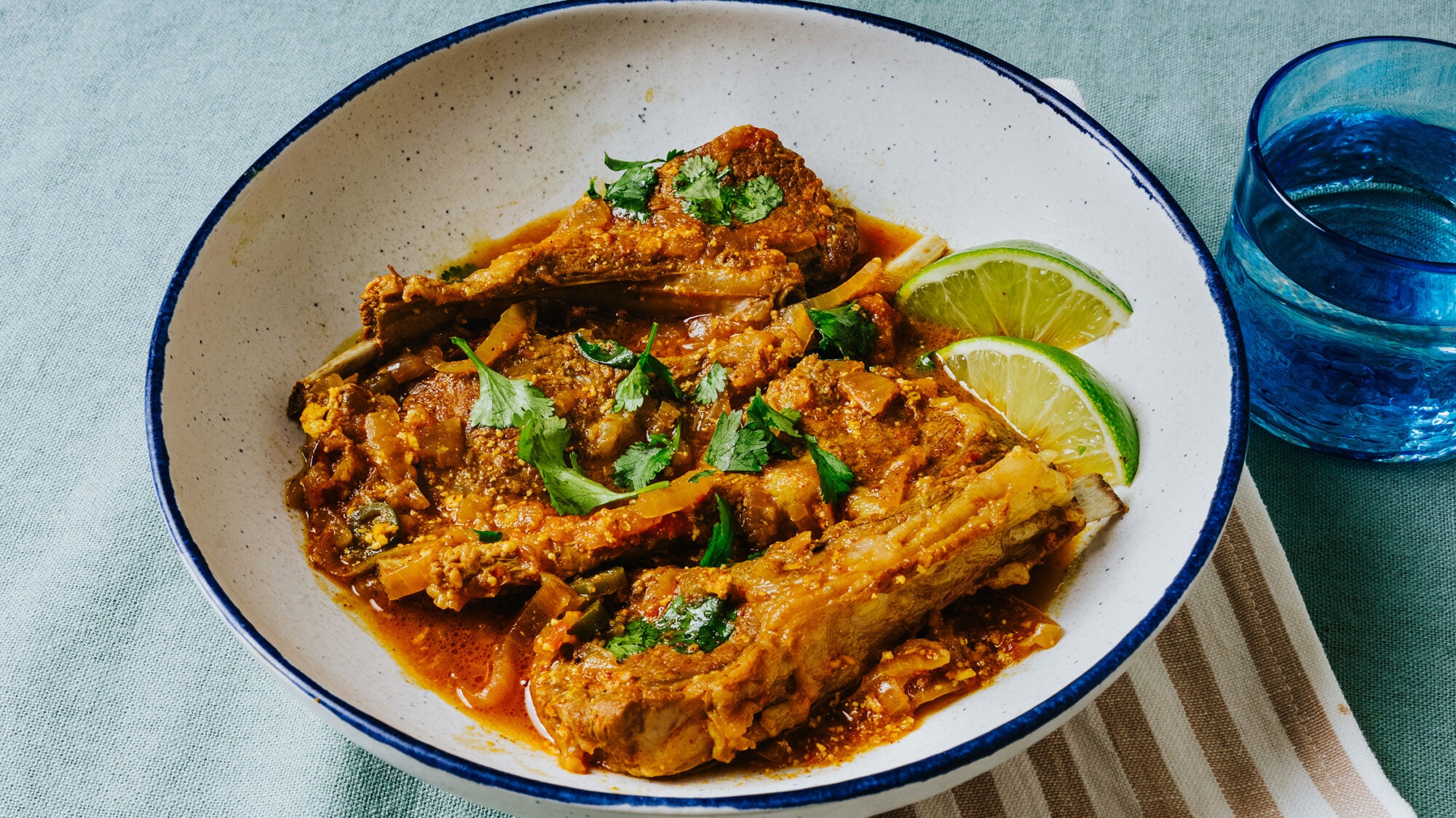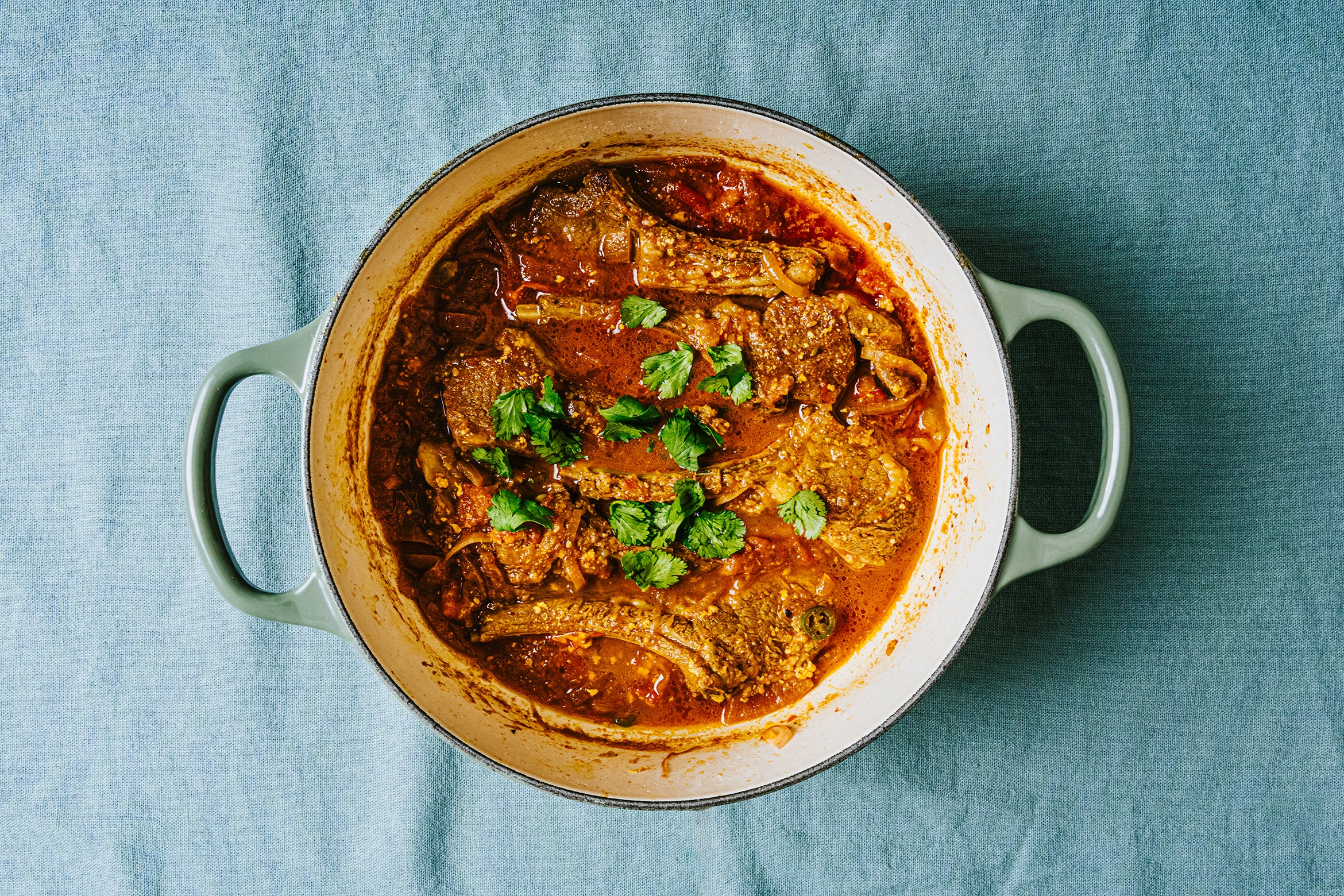
Getting to the bottom of a linguistic debate with a recipe for lamb chop masala.
Lately my family WhatsApp group has been overtaken by a pressing question: Why do we call goat meat “mutton”? As I searched the internet, from Reddit threads to TikTok videos and even government-funded agriculture studies, I realized I wasn’t alone in my confusion. Along the way, I also learned far more information about goats, lambs, and sheep than I think I will ever need in my life.
Mutton typically refers to the meat of an adult sheep, while lamb comes from a young sheep. Yet in South Asia, the term “mutton” applies to meat from a goat—a completely different species altogether. I found the same to be true across parts of the Middle East (particularly the Gulf region) and the Caribbean. In Bangladesh, India, and Pakistan, where there is a strong agricultural practice of breeding goats rather than sheep due to the warm climate, goat is commonly used in stews, rice dishes, and grills such as mutton biryani, keema, and karahi.
What fascinates me is how this terminology has persisted, even among diaspora communities. Walk into a South Asian halal butcher in any American city asking for mutton, and you will receive goat. Some say the British referred to goat as mutton during colonial rule and the name simply stuck and was adopted by the local population. While I couldn’t find a reliable source to confirm this, it might explain why the same reference is commonplace in the Caribbean, where British rule over the West Indies lasted into the 20th century. As with many things in our culture, there’s a lot of hearsay. Everyone has their own reasoning and narrative for why something exists. Much like our recipes, you’ll find hundreds of versions, each claiming authenticity. (Just think about biryani, whose many regional variations could cause one to stop speaking to their cousin over whether potatoes should be included or not.)

Many Western culinary traditions have “stew” meats, which are cheaper, tougher cuts cooked for longer periods of time to achieve tenderness. Many scoff at the idea of special cuts like lamb chops being used in stews, but in South Asian as well as Caribbean cooking traditions, this isn’t uncommon. In heavy-meat-centric societies, all cuts are fair game. Plus, short cooking times achieve tenderness and bold flavor with minimal effort.
Semantics aside, this recipe is inspired by a popular Pakistani dish made with mutton chops or, rather, goat chops. Known as “chaap ka salan” in Urdu and Hindi, it’s laden with fried onion, ginger, garlic, tomato, and warm spices like fragrant cumin, coriander, and red chili, then stewed until tender and deeply flavorful. Since lamb is much easier to find in the United States than goat, I wanted to re-create this dish using lamb chops.
It’s extremely important here to trim and skim the fat off the lamb chops, so let a butcher do the hard work for you if it feels too daunting. There are two stages of mostly inactive cooking—the first to allow steam to tenderize the meat and infuse it with the spices, and the second to thicken the gravy. It all comes together quickly yet still feels special enough to serve to company. Personally, I like to order fresh naan from a local Indian or Pakistani restaurant, perfect for sopping up that warming, rich gravy.